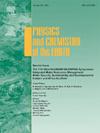Comprehensive review on the impact of high temperatures and dynamic loading on rocks in construction materials
IF 3
3区 地球科学
Q2 GEOSCIENCES, MULTIDISCIPLINARY
引用次数: 0
Abstract
The majority of ancient structures worldwide were built using naturally occurring materials, predominantly rocks. The increasing occurrence of explosions and fires underscores the significance of examining the reaction of rock to elevated temperatures and pressures. Elevated temperatures can induce alterations in the physico-mechanical and elastic characteristics of the rock, rendering it more susceptible to failure when subjected to repetitive, uniform loading. Given the essential role of rocks in the construction of various structures, it is imperative to prioritize the analysis of these geological formations. Therefore, it is imperative to thoroughly examine all potential future scenarios in which adverse environmental conditions manifest. This study examines the impact of fires, as their occurrence has witnessed a notable rise in recent years. Prominent examples include the Namdaemun fire in 2008, the National Museum of Brazil fire in 2018, and the Notre Dame fire in 2019, among others. The inherent strength and failure behavior of rocks are modified by physico-mechanical changes induced by elevated temperatures. The development of appropriate remediation and renovation protocols for structures damaged by fire can be achieved by quantifying the thermally-induced alterations. Finally, this study offers valuable insights into a potential resolution for the previously mentioned issue, thereby enhancing experts' comprehension of the underlying principles governing explosions and structural fires, and granting them a more profound understanding of structural dynamics.
高温和动荷载对建筑材料中岩石的影响的综合综述
世界上大多数古代建筑都是用天然材料建造的,主要是岩石。不断增加的爆炸和火灾事件凸显了研究岩石对高温高压反应的重要性。升高的温度会引起岩石的物理力学和弹性特性的变化,使其在反复均匀加载时更容易破裂。考虑到岩石在各种构造中的重要作用,必须优先考虑这些地质构造的分析。因此,必须彻底检查所有可能出现的不利环境条件的未来情景。这项研究考察了火灾的影响,因为近年来火灾的发生率显著上升。2008年的南大门火灾、2018年的巴西国家博物馆火灾、2019年的巴黎圣母院火灾等都是典型的例子。高温引起的物理力学变化改变了岩石的固有强度和破坏行为。通过量化热诱发的变化,可以制定适当的修复和改造方案,以应对火灾损坏的结构。最后,本研究为前面提到的问题的潜在解决方案提供了有价值的见解,从而增强了专家对爆炸和结构火灾的基本原理的理解,并使他们对结构动力学有了更深刻的理解。
本文章由计算机程序翻译,如有差异,请以英文原文为准。
求助全文
约1分钟内获得全文
求助全文
来源期刊

Physics and Chemistry of the Earth
地学-地球科学综合
CiteScore
5.40
自引率
2.70%
发文量
176
审稿时长
31.6 weeks
期刊介绍:
Physics and Chemistry of the Earth is an international interdisciplinary journal for the rapid publication of collections of refereed communications in separate thematic issues, either stemming from scientific meetings, or, especially compiled for the occasion. There is no restriction on the length of articles published in the journal. Physics and Chemistry of the Earth incorporates the separate Parts A, B and C which existed until the end of 2001.
Please note: the Editors are unable to consider submissions that are not invited or linked to a thematic issue. Please do not submit unsolicited papers.
The journal covers the following subject areas:
-Solid Earth and Geodesy:
(geology, geochemistry, tectonophysics, seismology, volcanology, palaeomagnetism and rock magnetism, electromagnetism and potential fields, marine and environmental geosciences as well as geodesy).
-Hydrology, Oceans and Atmosphere:
(hydrology and water resources research, engineering and management, oceanography and oceanic chemistry, shelf, sea, lake and river sciences, meteorology and atmospheric sciences incl. chemistry as well as climatology and glaciology).
-Solar-Terrestrial and Planetary Science:
(solar, heliospheric and solar-planetary sciences, geology, geophysics and atmospheric sciences of planets, satellites and small bodies as well as cosmochemistry and exobiology).
 求助内容:
求助内容: 应助结果提醒方式:
应助结果提醒方式:


